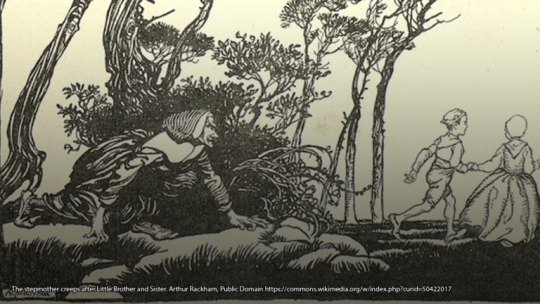#folklorethursday
Text
Vampire Fact #12 - How to Identify a Vampire
I’m back with another vampire fact! In fact, all folklore facts are now back, so expect to see more of these!
The winner of the last vampire fact’s Patreon poll was “how to identify a vampire” (that was a hot minute ago because I had to take a break from these), very much like my previous werewolf fact on how to identify a werewolf.
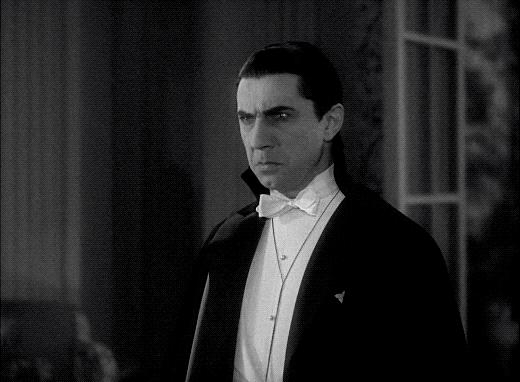
I won’t be covering pop culture vampires in detail/providing a list of how to identify vampires in pop culture. I’m not so deeply versed in vampire pop culture as I am werewolf pop culture; I only study vampire folklore, not their modern media, unlike with werewolves. I familiar with some of it, for sure, but I’d never pretend to be any kind of expert on broader vampire pop culture.
Please note the following is not to be considered a 100% complete list, as there are many, many vampire legends out there! This is just several of the more “popular” methods of identification and perhaps some of the better-known.
Some Folklore Vampire Identifiers
Pale - There are some stories in which vampires actually are pale in folklore, and in which being particularly pale might be a sign of vampirism.
Reddish or purplish skin - Conversely, vampires can also be identified - especially in Eastern European regions - by having “reddish” or “purplish” skin and perhaps even a swollen appearance. All of this comes from drinking too much blood. It’s basically the opposite of being pale: they look flushed and reddened instead of pallid. This one was not uncommon.
Red eyes - This didn’t always mean red eyes as in red irises, like in a lot of popular culture. Often, it could also mean similarly to the flushed appearance: it meant bloodshot eyes, eyes full of blood. But some might also be interpreted as having red irises, and let’s face it, red irises are very cool.
Unnaturally beautiful - This one isn’t uncommon in legends, either: unnatural beauty. Vampires in many stories seduced their victims, and it wasn’t too unusual for things to get steamy, either. Again with the conversely, though...
Unnaturally hideous - Vampires can also be unnaturally hideous. We’re talking like really nasty, because they’re monsters - often these are the monster vampires, demons, not vampires that were ever actually human. However, sometimes signs of being a vampire could also be just human traits that are considered hideous, such as having a caul, being exceptionally hairy (judgmental much?), etc.
Only comes out at night - This is an obvious one in both popular culture and folklore. Often in folklore, however, vampires also only came out at night because it was the only time they actually left their graves. Vampires didn’t come out only at night because they were burned by the sun in folklore (they actually weren’t!), but because they were nocturnal.
Signs of undeath in coffin - Often, vampires were identified via actually unearthing the coffin and taking a look at the corpse. There were many signs that might show a corpse was actually leaving the grave as a vampire, such as growth of the hair or fingernails, the eyes being open or partially open, blood around the mouth, reddened eyes, or a swollen reddish or purplish appearance, as if the corpse is engorged with blood.
Well, there’s a few, at least! There are so many vampire legends I won’t cover “all” of them until, you know, I write the Vampire Facts book someday (maybe? Werewolf Facts the book is definitely on the way, though). At any rate, be sure to tell all your friends how to find vampires today by reblogging this post!
Oh, and no, fangs are not included in folklore.
Also, if you are curious about vampire weaknesses, be sure to check out my post on that, too, as well as the vampire masterlist (linked at the bottom of this post)!
Until next time!
( If you like my blog, be sure to follow me here and elsewhere for more folklore and fiction, including books, especially on werewolves! And please consider donating and/or supporting me on Patreon - not only will you help me keep this blog running, but patrons get cool stuff and rewards in return! You’ll find lots more cool stuff over on my personal website.
maverickwerewolf.com — Patreon — Wulfgard — Werewolf Fact Masterlist — Twitter — Vampire Fact Masterlist )
#vampire#vampires#vampirism#vampire friday#vampire fact#vampire facts#folklore#folklore fact#folklore facts#mythology#monsters#monster lore#folklore thursday#folklorethursday#undead#legends
63 notes
·
View notes
Photo

The unicorn is Scotland's national animal! These lion unicorns guard the door of Delgatie Castle in #Aberdeenshire. #FolkloreThursday #Scotland #unicorns #snow #castles #scottishcastle (at Delgatie Castle) https://www.instagram.com/p/CjXQwNVgx3l/?igshid=NGJjMDIxMWI=
13 notes
·
View notes
Photo
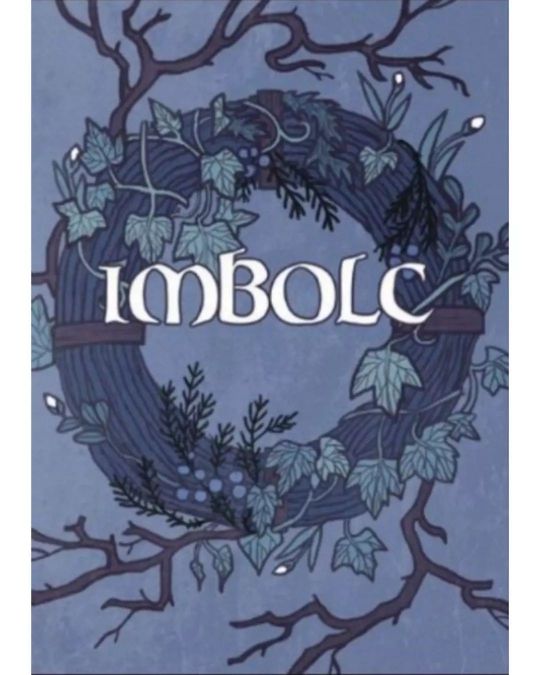
#FolkloreThursday: Imbolc 🕯️🌞 The celebration of Imbolc originates from the Celts. Imbolc symbolizes the halfway point between the winter solstice (Yule) and the spring equinox (Ostara). The word "imbolc" means "in the belly of the Mother," because the seeds of spring are beginning to stir in the belly of Mother Earth. Imbolc is a pagan holiday celebrated from February 1 through sundown February 2. Based on a Celtic tradition, Imbolc was meant to mark the halfway point between winter solstice and the spring equinox in Neolithic Ireland and Scotland. The holiday is celebrated by Wiccans and other practitioners of neopagan or pagan-influenced religions. Imbolc is just one of several pre-Christian holidays highlighting some aspect of winter and sunlight, and heralding the change of seasons. The celebration of Imbolc dates back to the pre-Christian era in the British Isles. The earliest mentions of Imbolc in Irish literature date back to the 10th century. Poetry from that time relates the holiday to ewe’s milk, with the implication of purification. It’s been speculated that this stems from the breeding cycle of sheep and the beginning of lactation. The holiday was traditionally aligned with the first day of spring and the idea of rebirth. After months of turning inward, of hibernation & of rest, life is beginning to stir again. Depending on where you are, you may be seeing the first spring flowers beginning to show signs of life. Spiritually, this is a time of new life coming into manifestation. We may only be seeing the tiniest hints of life above the surface but things are really beginning to stir in the darkness. Just like nature is beginning to awaken after its dormant period, we are also reawakening with new dreams & exciting new plans. #imbolcblessings #imbolc2023 #spring #springseason #spring2023 #summer #summerseason #summer2023 #mystique #spiritique #mindfulness #spiritual #spirituality #blessedimbolc #mysticalsummers #mysticalsummer #februaryblessings #firstdayofspring #pagan #paganism #mystical #mysticisim #mystic #folklore #folkloreflash #folkspirits #imbolc2023 #blessedbe #Brigid #brigidsday https://www.instagram.com/p/CoKMEZFyipg/?igshid=NGJjMDIxMWI=
#folklorethursday#imbolcblessings#imbolc2023#spring#springseason#spring2023#summer#summerseason#summer2023#mystique#spiritique#mindfulness#spiritual#spirituality#blessedimbolc#mysticalsummers#mysticalsummer#februaryblessings#firstdayofspring#pagan#paganism#mystical#mysticisim#mystic#folklore#folkloreflash#folkspirits#blessedbe#brigid#brigidsday
3 notes
·
View notes
Photo

A cute little Countryside Fair with ferris wheel, roller coaster, wonderful shops and cute whimsical creatures. I intent to bring out the fun, love and laugh that we all experience when we visit fairs. I imagined how these beautiful woodland animals would react or just be like in these kinda fair. I believe this art paints a pretty great picture☺️😇 #folkloreart #folklore #folklorethursday #folkloreandfairytales #woodlandanimals #gouacheartist #childernbook #childernbookillustrator #childernbookillustration #whimsicalart #whimsicalartist https://www.instagram.com/p/CpFygHVr-Zd/?igshid=NGJjMDIxMWI=
#folkloreart#folklore#folklorethursday#folkloreandfairytales#woodlandanimals#gouacheartist#childernbook#childernbookillustrator#childernbookillustration#whimsicalart#whimsicalartist
1 note
·
View note
Text
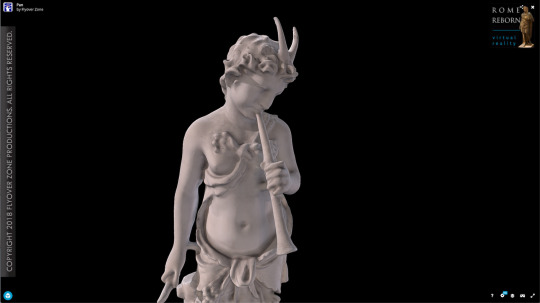
Which culture(s) worshipped Pan as a deity of the wild? https://www.flyoverzone.com/model/?uid=9dd24c9a50d64b759ae50ea86793bcc3
0 notes
Text
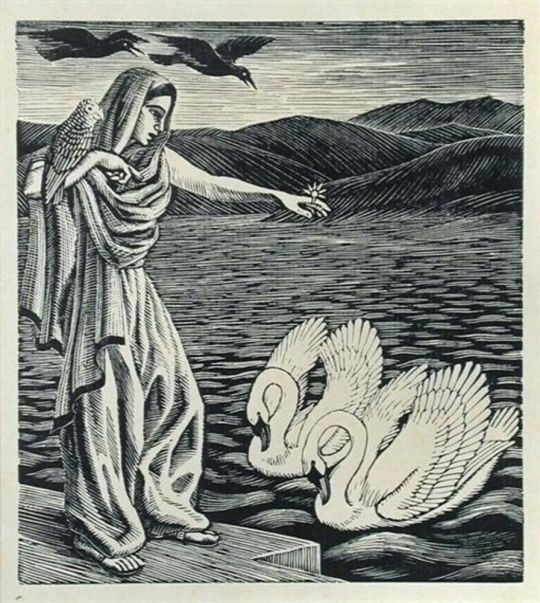
#WomensArt1 @womensart1.bsky.social
The swan, "Eala" in Scots Gaelic, "Eala" in Irish, "Alarch" in Welsh, "Alarc’h" in Breton, "Olla" in Manx, "Alargh" Cornish, is associated with the goddesses of Celtic peoples,with links to the Otherworld (Aos Si). #FolkloreThursday Princess and the Swans (1939) By Gwen Raverat.
33 notes
·
View notes
Text
Midsummer Night in Romania, Sanzienele or Dragaica
On the 24th of June, around Midsummer Night, in #Romania we celebrate Sanzienele or Dragaica, #magic and joy.
#Im4Ro #folklorethursday #midsummer #sanziene #dragaica #ib6 #summer
On the 24th of June, around Midsummer Night, in Romania we celebrate Sanzienele or Dragaica, but also the birth of Saint John the Baptist.
The Midsummer Night in Romania, magic and joy, is known as the Feast of Sanziene or Dragaica (in Moldova and the south of Romania), and is celebrated on the night of 23rd to 24th of June while Sanziene Day, the 24th of June, is also known as the Day of the…
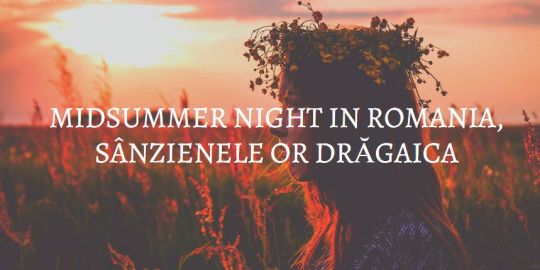
View On WordPress
#midsummer night#noaptea de sanziene#origin Sun cult#Sanziene Dragaica#Sanziene tradition#spells charms#sumer traditions in Romania
2 notes
·
View notes
Text
The Laird o Wariston
"But Wariston was sair to blame,
For slighting o his lady so;
He had the wyte o his ain death,
And bonny lady’s overthrow." ~ #OTD 1600, Jean Livingston was executed in the Canongate for murdering her abusive husband, as recounted in many versions of the tragic ballad "The Laird o Wariston". #FolkloreThursday #dailyfolklore
0 notes
Text
Folklore Fact - Christmas Trees!
It's Christmastime! The most wonderful time of the year! And after holding a festive poll on my Patreon, Christmas trees are the very clear winner for this month's folklore fact. Let's dive right in...

(Couldn't resist)
There are a lot of different theories about Christmas trees. All kinds of concepts about how they might've originated, who had them first - so let's start at the "beginning," per se.
First off, various sources - including most prominently the Encyclopedia Britannica - mention that many cultures saw evergreens as representing eternal life. Makes sense, given they're always green. The ancient Egyptians, Chinese, and Hebrews used evergreen garlands, trees, and - yes - wreaths to symbolize eternal life, and they were used in worship.
Likewise, worship of trees was common among Scandinavian cultures and many other European cultures besides; for instance, the great tree at the Temple at Uppsala was said to be evergreen and was where sacrifices were hanged (including men, horses, dogs, and others)...

(sacrifices hanging in the trees at the temple at Uppsala)
Continuing the sacredness of trees in Scandinavian cultures, decorating the house with evergreens at the end of the year warded away the devil, and sometimes trees were set up for birds to nest in during Christmas time. There was also the very important Yule log during the time of Yule, although that was a log to burn, not a tree. The Yule log is still a tradition today.
However, none of this is the same as bringing a tree into your home and decorating it with candles, gold, and whatever else - and certainly not hanging sacrifices on it. So what really started the Christmas tree we have today?

The evergreen was kind of always specifically related to sanctity and everlasting life in Christianity. After Donar's Oak (a sacred pagan tree) was felled by the Christian Saint Boniface and his retinue, some later versions of the tale include an evergreen growing in its place, its triangular shape representing the Holy Trinity. Likewise, we have Roman sources mentioning Christians decorating their homes in evergreens.
Decorated trees and evergreen elements appear throughout Christian lore over many time periods. For instance, Christmas trees have often been equated to the "tree of paradise" found in the mystery plays of the Middle Ages, which were held on what is now Christmas Eve (December 24). A tree decorated with apples - the forbidden fruit of original sin, which Christ took away - and white wafers (redemption and the Eucharist) was used in plays about Adam and Eve on their name day. Later, this tree was placed in homes, and the red apples became shiny red balls - the same ones we know and love today. It's entirely possible these were our first Christmas trees.
It is often thought the first reference to real "Christmas trees" appears toward the end of the medieval period in the 15th century in the writings of the Regiment of the Cistercian Alcobaça Monastery in Portugal...
"Note on how to put the Christmas branch, scilicet: On the Christmas eve, you will look for a large Branch of green laurel, and you shall reap many red oranges, and place them on the branches that come of the laurel, specifically as you have seen, and in every orange you shall put a candle, and hang the Branch by a rope in the pole, which shall be by the candle of the high altar."
Many of these traditions still live on today.
Generally, Christmas trees are considered to be largely in the Baltic regions and Central Europe. Some people also ascribe the Christmas tree to Martin Luther, who may have been the first to add candles to decorating trees. There is also a representation of a Christmas tree in a keystone sculpture of a home in Turckheim, Alsace (part of France today, formerly in the Holy Roman Empire of the German Nation). This dates to 1576.
So, are there pre-Christian origins to the Christmas tree? Maybe, as depending upon whom you ask, it did depend on region and denomination in the past - but it's also possible that it was a separate Christian concept and originated from the tale of Adam and Eve and the redemption brought by Jesus Christ, originating even before what some scholars consider to be the first real representations of Christmas trees.
We can't "prove," necessarily, that the evergreens of Christianity came from any one particular previous source. Although all cultures that became Christian were certainly influenced by their previous customs, it could've also been something that originated independently in Christian culture or came about influenced by not one but multiple concepts and cultures. No other culture quite approached it the exact same way as did Christians, same as they never fully approached it the same way among one another. There are many cases of similar traditions developing independently, as is already evident in the idea of evergreen representing eternal life (which of course makes sense) across many cultures that had little or no communication with each other during these time periods.
So... who knows! It was and is a subject of debate among scholars. Either way, the Christmas tree is now undeniably an important part of Christmas and the Christmas season. It just isn't Christmas without the trees.
And that's this year's Christmas folklore fact! If that really counts as folklore. Religious fact? Anyway!
Until next time, and I truly wish everyone a very merry Christmas and a wonderful new year! It's the best time of the year, and I hope it's fantastic for us all.
P.S.: Please don't use this post as a jumping off point to attack any particular set of beliefs/religion. Be nice. It's Christmas. Thanks in advance.
( If you like my blog, be sure to follow me here and elsewhere for more folklore and fiction, including books, especially on werewolves! You can also sign up for my free newsletter for monthly werewolf/vampire/folklore facts, as well as free fiction and nonfiction book previews. You'll be the first to hear about everything, without having to check social media!
Free Newsletter — maverickwerewolf.com (personal site + book shop) — Patreon — Wulfgard — Werewolf Fact Masterlist — Twitter — Vampire Fact Masterlist — Amazon Author page )
#folklore#folklore fact#Christmas#Christmas tree#Christmas trees#xmas#Norse mythology#Norse myth#folklore thursday#folklorethursday#legends#myths and legends#Thor#mythology#pagan#Christianity#Christian#holiday#holidays#traditions
16 notes
·
View notes
Photo

According to Scottish folklore, if you want to see fairies, you should eat a primrose! #FolkloreThursday #flowers #spring #fairies #folklore #primroses #snow #scotland #flowerstagram #flowersofinstagram (at Aberdeenshire) https://www.instagram.com/p/Crz70J-oigd/?igshid=NGJjMDIxMWI=
#folklorethursday#flowers#spring#fairies#folklore#primroses#snow#scotland#flowerstagram#flowersofinstagram
4 notes
·
View notes
Photo

#FolkloreThursday: Part 2/3: Memorial of Our Lady of Sorrows (September 15) Five years later, they took up the sorrows of Mary, standing under the Cross, as the principal devotion of their order. Over the centuries several devotions, and even orders, arose around meditation on Mary's Sorrows in particular. The Servites developed the three most common devotions to Our Lady's Sorrows, namely the Rosary of the Seven Sorrows, the Black Scapular of the Seven Dolours of Mary and the Novena to Our Sorrowful Mother. The rosary consists of a chaplet of seven septets of beads (upon which is said an Ave), separated by one bead (on which is prayed a Pater Noster. Meditations for each dolor were composed by Pope Pius VII in 1818. The Black Scapular is a symbol of the Confraternity of Our Lady of Sorrows, which is associated with the Servite Order. Most devotional scapulars have requirements regarding ornamentation or design. The devotion of the Black Scapular requires only that it be made of black woollen cloth. From the National Shrine of Saint Peregrine spread the Sorrowful Mother Novena, the core of which is the Via Matris.The core of the prayers in the novena is the Via Matris. #folklorethursday #mamamary #mothermary #ourladyofsorrows #holymother #catholique #catholiques #romancatholic #romancatholicchurch #catholicmystics #catholicworld #intothemystic #catholic #catholicism #materdolorosa #Spiritique #mindfulness #Spiritual #Spirituality #mystical #mystique #mystic #mysticisim #renaissance #renaissanceart #folk #folklore #folkspirits #folkmystic https://www.instagram.com/p/Cih8saxJfyn/?igshid=NGJjMDIxMWI=
#folklorethursday#mamamary#mothermary#ourladyofsorrows#holymother#catholique#catholiques#romancatholic#romancatholicchurch#catholicmystics#catholicworld#intothemystic#catholic#catholicism#materdolorosa#spiritique#mindfulness#spiritual#spirituality#mystical#mystique#mystic#mysticisim#renaissance#renaissanceart#folk#folklore#folkspirits#folkmystic
7 notes
·
View notes
Text
Top 5 Romanian Folk Tales

I wanted to research a bunch of folktales because it relates quite a lot to fairytales and I just wanted to read through a few of them. This is also so I can gain a little bit of inspiration for storytelling and good messaging.
Youth Without Age And Life Without Death
I'm not sure what this story is about, I read it through a hundred times and I think I have a good summary of what the story is telling, however, I have no idea what the message is and most of what they are talking about.
The way people wrote back then was so metaphorical to the point it feels like you are deciphering a code. It's very annoying, this one was the most annoying when the others were more easy to understand what was going on.
This story is about a couple who couldn't have children, but by some miracle, a child was born. The King then promised him eternal youth. When the baby turned 15 he went on a quest with a magic house to find eternal youth. Along his journey and found eternal youth in a castle, hills, flowers, and three women. He fell in love with the youngest sister and started a family with her.
Sadly this is where it gets confusing so I'm sorry if I get some things wrong.
For some reason landed in a valley he wasn't supposed to go and when he arrived back to his family, he realized that it was all a fairy tale, all a dream. So he returned to his home of birth and turned to dust.
So I believe what happens was that the eternal youth area, stopped time in that specific area but everywhere else was rapidly ageing. So when he left and came back to his family and found out it didn't exist anymore so he decided to go home, but because he spent so long in the land of eternal youth, he rapidly started to age when he left.
Interesting, but I don't understand the message. I think the message was to not waste your life away searching for something that doesn't exist.
Emperor Aleodor
Emperor Aleodor was the son of a king, but one day he overstepped the king's boundaries and stepped onto the land of ‘Half-man-riding-on-the-worse-half-of-a-lame-rabbit’. The creature was furious and Emperor Aleodor apologized but the creature refused his apology, the only way he could redeem himself was by fetching Green Emperor’s daughter.
Emperor Aleodor travelled far and was so hungry, that he found a pig, a cow, and a horsefly to eat, yet he didn't kill them so the animals in return each promised to come to his rescue.
Eventually, he found Green Emperor’s majestic castle. He realized that he could have the princess but only if he passed a test.
Emperor Aleodor stayed true to his mission and hid three times using the scale, the feather, and the wing membrane, the animals gave him. Because the princess couldn't find him, he passed the test and took the princess with him. The princess liked him and gave the ‘Half-man-riding-on-the-worse-half-of-a-lame-rabbit’ the cold shoulder, which made the creature angry and vanished from the world, never to be seen again. And the two lived happily ever after.
I think this one was to teach you to follow the rules and you will be rewarded.
The Enchanted Pig
An Emporer left for war and told his 3 daughters not to step into the room in the back. The three daughters eventually did and found a book that read out each daughter's fate. Each daughter was wed to a sutor until it was time for the third sutor to marry the youngest daughter.
Unfortunately, he was a pig. He had his mud baths and acted like a pig, only at night he would remove his skin and become a man. But one day only Hag suggested tying a red string around his ankle at night. This was bad because the hag was the one who cursed him.
The princess travelled far and wide to search for her husband, until she found the forest he was hiding in and there they can continue their live together as humans.
Strange story, it reminds me a lot of Beauty and the Beast. Maybe this story inspired that story.
Like Salt in a Meal
This one is very simple.
And Emperor asked his three daughters how much they love him, and he was hurt by his youngest daughter's answer. She said that she practically loves him, like the salt in a meal.
She was then banished from the castle and found a castle that belonged to another emperor and took the job of a kitchen maid and was then known as a gifted cook. But when her father visits for a banquet, she decided to only cook for him, secretly.
All of the guests enjoyed their food but her father was the only one who had to eat his food made with sugar and honey instead of salt. The truth eventually came out and both asked for forgiveness, they both laughed and all was merry.
This is quite a funny tale, it's very sweet or should I say like salt in a meal. Hahahahahahah.....
The Old Man’s Clever Daughter
The good daughter wanted to fire in the fireplace to cook breakfast so she decided to work hard at the house of Saint Friday. She does her course well and when asked what she wanted as a reward, she asked for a small chest for storage. When it was given to her, it was filled with jewels and gold.
The stepsister sees this and becomes greedy, she rushes through the chores, and once she was asked what she wanted for her reward. She asked for the same thing, yet she did not get the jewels because of her greed.
This is a pretty simple story and message, basically telling you to not be greedy.
Conclusion:
These are all very good stories, some are quite complicated and some are very simple and have a good message. When reading “The Enchanted Pig” I realized it's very similar to Beauty and the Beast which also reminded me that my little red riding hood story is kind of similar to Beauty and the Beast.
My story has a girl who is quite a pretty girl which is why I think is another reason why the villagers call her a demon, not only because of her powers but also for her looks. It's all jealousy. But the shadow wolf character Valko is a huge intimidating wild animal that turns into a pretty handsome man.
It runs on a similar story, but I think this is a great thing and plays a lot into the fairy tale aspect of my story. Not only I got little red riding hood, but I also got Beauty and the Beast. Maybe I could get Cinderella in there.
Maybe when Rose escapes from Lord Vincent on her wedding day, she could leave behind her wedding shoe. Or some item of clothing.
I could get Snow White and Sleeping Beauty in there but I have no idea how to, especially The Little Mermaid fairy tale.
0 notes
Text
Harvest Festivals
Would you consider Ieiunium Cereris to be a #harvest related religious holiday in ancient Rome? Why or why not?
1 note
·
View note
